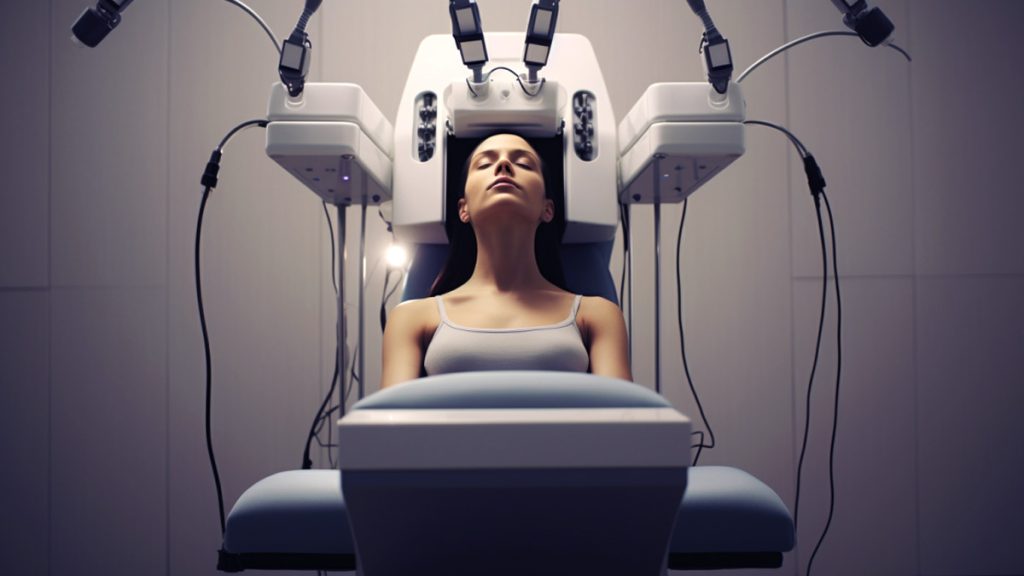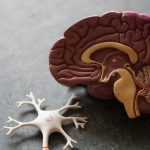What is a TMS Machine and Who Uses It?

Transcranial Magnetic Stimulation can be an effective treatment for several mental health conditions, but you may have questions about how a TMS machine works.
In part two of our series about Transcranial Magnetic Stimulation (TMS), we take a deep dive into how the actual TMS device functions, who uses it, and where you can find treatment with one.
Here’s everything you need to know about a TMS machine and who uses it.
What is a TMS machine?
In the simplest way possible, a TMS machine is a device that stimulates the brain using changing magnetic fields. These magnetic fields stimulate nerve cells in the brain related to mood and depression.
In general, patients who go into for TMS treatment will have a magnetic coil placed across their scalp. This magnetic coil will produce magnetic fields that produce the desired outcome.
Although TMS machines can look and function differently depending on the manufacturer, they’re generally include a chair as well as a larger case where the internal mechanisms of the device are housed. Additionally, they’ll also include a coil that will actually be placed on a patient’s scalp.
How does a TMS device work?
More specifically, the coil that is placed on a user’s head includes enclosed wires that produce a magnetic field. These fields have about the same strength as a magnetic resonance imaging machine (MRI) — a medical device with which you’re more likely to be familiar.
This magnetic field induces a specific electrical current in the brain. This current can activate nearby nerve cells — making them more or less excitable.
Although the exact physics of how a TMS machine improve symptoms of depression and other mental health conditions are not well understood by science, research has shown that the device can be effective.
When did the TMS device get invented?
The field of using electrical currents to change certain states of the brain dates back hundreds of years. In the late 1800s, for example, scientists and physicians were using electrical currents to treat specific types of mental illnesses.
Generally, using electrical currents in therapy proved to have unwanted side effects. For one, the process was incredibly uncomfortable. The downsides of electric therapy led to the development of magnetic fields to alter brain signals.
The first stable TMS devices were invented in the mid-1980s. Although not originally designed for therapeutic uses, they were found to be effective at treating a range of conditions.
Does a TMS machine cause any side effects?
As we covered in our previous article in our series on TMS therapy, this type of treatment is generally well-tolerated by patients. Any side effects are generally very mild.
Unlike therapies like electroconvulsive therapy, TMS also does not cause memory loss or seizures. It also doesn’t carry any of the side effects of treatments like vagus nerve stimulation.
If you’re interested in TMS therapy, you can generally expect mild symptoms like scalp discomfort, headache, or lightheadedness. These symptoms dissipate quickly and generally lessen in severity with repeat treatments.
What conditions can a TMS machine help?
As of writing, a TMS machine has been approved by the U.S. Food and Drug Administration (FDA) to treat symptoms of several mental illnesses — chiefly depression.
Research is also underway to determine whether a TMI device can be effective at treating everything from Alzheimer’s disease to schizophrenia.
In the U.S. and Europe, there’s promising evidence that a TMS device can be used to treat the following conditions:
- Depression
- Obsessive-compulsive disorder (OCD)
- Migraines
- Smoking cessation
- Panic disorders
- Anxiety disorders
- Parkinson’s disease
Who uses a TMS machine?
Generally, a TMS machine is used by a TMS technician. These are medical professionals trained in their use. You can think of them just like a X-ray technician or someone trained to provide an MRI.
As far as where exactly you’ll find a TMS device, they can generally be found at a range of different service providers. Basically, anywhere you might find Transcranial magnetic stimulation in San Diego. These can include:
- Mental health facilities
- Brain therapy institutions
- Research hospitals
- Private clinics
- And more
How to get treatment with a TMS device?
Before you actually sit down in a chair and receive TMS treatment, you’ll likely want to talk to your primary care physician.
In general, TMS treatment is administered when depression or other mental health conditions do not respond well to other therapies.
Before receiving any sort of new medical treatment, you should always talk to your doctor.





